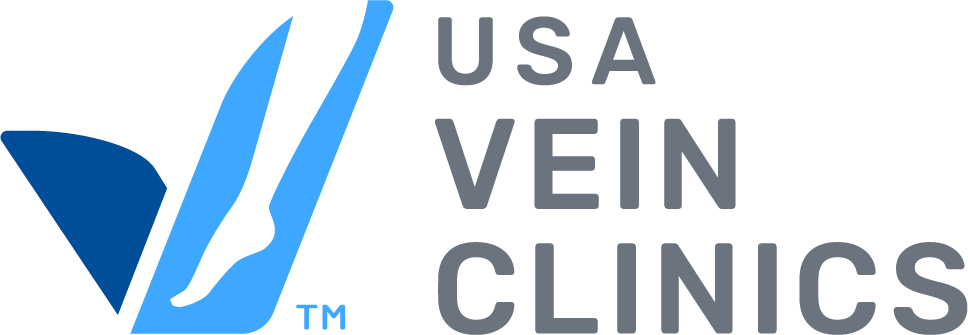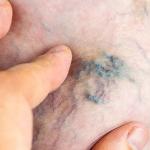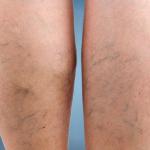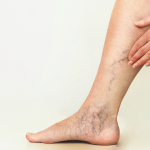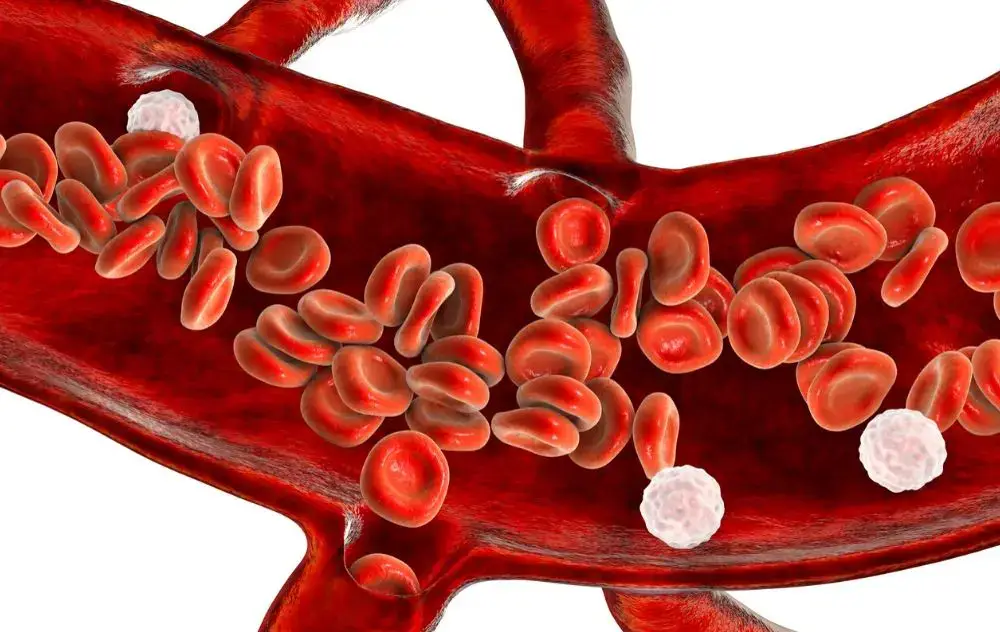
Are you noticing signs of poor blood circulation, such as a tingling or numbing sensation in your legs or cold fingers or toes? These could be signs of poor circulation, a common concern associated with varicose veins.
Poor circulation occurs when your blood vessels, particularly veins,struggle to distribute oxygen and nutrients throughout your body quickly and efficiently.
While poor circulation can be a symptom of other health issues, varicose veins themselves are not something to take lightly. They not only contribute to circulation problems but can cause pain, swelling, and even skin complications. Poor circulation can impact everything from your immune system to brain functioning and heart health.
So, what can you do to fix poor circulation?
Early diagnosis and treatment of varicose veins can improve circulation and prevent further complications. It is important to see a medical professional for a proper evaluation. However, you can also take steps to increase blood circulation and support your blood vessels before and after your treatment.
Stay On Top Of Your Health – Join Our Newsletter
Causes of Poor Circulation
The most common cause of poor circulation is venous insufficiency, also known as vein disease. This condition develops when vein valves become damaged, allowing blood to flow in the opposite direction.
Healthy blood flow travels through your veins from your legs up toward your heart. Diseased vein valves allow blood to pool, which causes decreased circulation. Over time, the blood that pools within your legs can cause painful symptoms and inflammation and increase the risk for serious health issues.
Other medical conditions that can cause poor circulation include the following:
- Peripheral artery disease (PAD): PAD is characterized by a narrowing of the blood vessels in the leg that restricts oxygenated blood from reaching areas of the body.
- Blood clots: These can develop anywhere in the body and trigger disruptions in circulation.
- Varicose veins: A common symptom of vein disease, these enlarged veins cannot transport blood through the body as efficiently as normal veins.
- Diabetes: Not only can diabetes cause bad circulation, but the condition can also trigger diabetic neuropathy, nerve damage that reduces sensation in the legs and arms.
- Being overweight: Added weight can put pressure on blood vessels, especially after standing or sitting for several hours.
- High blood pressure: Increased pressure damages the inner lining of blood vessel walls. Over time, that damage can lead to narrow, hardened arteries and weaker veins.
- Raynaud’s disease: Raynaud’s occurs when inadequate circulation causes cold feet or hands. It impacts the small arteries and causes them to narrow, making it harder for blood to circulate in your body.
Several factors can contribute to poor blood flow. Leading a sedentary lifestyle, experiencing chronic stress, and smoking can all increase blood pressure and damage blood vessels.
Additionally, age and genetics play significant roles. As the body ages, it produces less connective tissue, essential for keeping blood vessels strong and flexible.
Some individuals are genetically predisposed to vein issues. If someone has immediate family members with varicose veins or spider veins, they may be more likely to develop vein disease as well.
Click to Call and Schedule a Consultation
Symptoms of Poor Circulation
Bad circulation in the legs can cause symptoms such as:
- Cold feet or legs: Reduced blood flow in your feet causes them to feel colder than other body parts.
- Swollen legs, ankles, or feet: When your veins can’t push blood upward, it can collect in your legs. This blood pooling puts extra pressure on the area, causing fluid buildup and swelling.
- Muscle cramping: Inconsistent blood flow may create muscle aches and pains, potentially leading to restless legs syndrome (RLS).
- Numbness: Inadequate circulation may cause tingling or numbness in the thighs, calves, or feet.
- Skin changes: A lack of blood flow can cause discoloration and dryness of the skin on your feet and legs. Your skin might also appear shiny.
- Leg wounds or ulcers: A break in the skin on your leg can become larger from increased blood pressure and take a long time to heal or may not heal at all.
- Visible veins: When blood pools in your veins due to bad circulation, it puts pressure on the veins and causes them to bulge. This may cause varicose or spider veins to develop and become raised.
Not only can poor circulation cause painful or uncomfortable symptoms, but it can also increase the risk of serious health issues. When left untreated, lack of circulation can lead to slow or non-healing wounds that turn into ulcers on the legs, the development of blood clots, or even a rare condition known as the May-Thurner Syndrome (MTS).
In many cases, poor circulation is not life-threatening. However, treating underlying conditions such as venous insufficiency is important to avoid worsening symptoms. You should also know that some poor circulation symptoms, such as a sudden increase in leg swelling and pain, redness, and skin that’s warm to the touch, can indicate a severe or urgent health issue. In that case, seek medical attention right away.
Dietary Changes to Fix Poor Circulation
Addressing your diet is an excellent start to fixing poor circulation. Here are four dietary tips to help keep your blood vessels healthy.
- Stay hydrated. Drinking plenty of water and other fluids allows blood to flow more freely through veins. Women should drink about 11 glasses a day, and men should aim for 15.¹
- Eat a high-fiber diet. Fiber can help to prevent plaque from building up in the arteries and high blood pressure.² High-fiber foods include green leafy vegetables, carrots, berries, nuts, seeds, and whole grains.
- Consume nutrients for healthy veins. Foods high in vitamins C, E, and B3, copper, and potassium are good for the vascular system.
- Avoid foods that can worsen circulation. Processed and fast foods are high in table salt and saturated fats, which increase blood pressure and lead to circulation issues.
How Exercise Can Help Improve Blood Circulation
Physical activity strengthens leg muscles, which help leg veins pump blood upwards. Additionally, exercise strengthens the heart to pump blood throughout the body efficiently. Chemical changes also occur during exercise, helping the blood vessels relax and enhance blood flow.³
Every type of exercise, from pickleball to bowling, helps to support circulation in your feet and legs, so as long as you’re moving, you’re on the path to better circulation. Here are some of the best exercises to enhance circulation:
- Yoga and stretching
- Walking
- Cycling
- Swimming
- Jumping rope
Lifestyle Modifications to Support Your Blood Vessels
You can also help combat poor blood circulation problems by modifying or adding a few circulation-boosting habits to your day.
- Elevate your legs when you notice swelling or pressure.
- Wear comfortable-fitting shoes that do not fit tightly around the feet or ankles.
- Avoid sitting or standing for long periods. Instead, mix up your day by doing quick exercises between intervals of sitting or standing.
- Move around as much as possible when traveling in a car or by plane.
- Wear compression stockings to encourage the blood to move from your legs back to your heart.
- Be proactive about managing stress to avoid high blood pressure. Daily walks, meditation, and deep breathing can help to prevent stress from getting out of control.
- Quit smoking. Tobacco smoke constricts your blood vessels, leading to chronic issues with poor circulation.
SCHEDULE A CONSULTATION WITH A VEIN SPECIALIST
Medical Treatments and Therapies to Fix Poor Circulation
Vein treatments are the best way to fix poor circulation for people with vein disease and related symptoms like varicose and spider veins. Vein treatments address the damaged or diseased veins and reroute blood flow to healthy veins. Afterward, symptoms like swelling, leg pain, numbness, and skin issues start to subside. Also, varicose and spider veins become less visible.
Minimally invasive vein treatment options available:
- Endovenous Laser Treatment (EVLT)
- Varithena
- Ultrasound Guided Sclerotherapy (USGS)
- VenaSeal™
- Radiofrequency Ablation (RFA)
People with blood clots or at risk of a blood clot may need to have their doctor prescribe blood thinners to help with circulation.
Noninvasive therapies, such as massage therapy and hydrotherapy (taking a warm bath), can help open up the veins and arteries and encourage healthy blood circulation. This is a good solution to alleviate symptoms before treatment.
MORE QUESTIONS? ASK OUR DOCTORS
Can You Prevent Bad Blood Circulation?
You can prevent poor circulation issues by following our shared tips and getting regular vein health check-ups.
Incorporating these healthy habits into your daily routine can greatly enhance your vein health. For further support, USA Vein Clinics provides expert services to help you maintain and improve blood vessel function.
Even with a healthy lifestyle, it’s still possible to develop circulation problems, especially if you’re more prone to vein health issues because of an underlying condition like diabetes, heredity, or aging. Routine vein health screenings are encouraged to monitor vein health, detect early symptoms, and address them promptly.
At USA Vein Clinics, our doctors provide advanced screenings using ultrasound vein mapping. They can also create a personalized treatment plan to support your veins and help prevent poor circulation problems.
Take control of your vein health. Schedule a consultation with a vein specialist near you today.
References:
- Soto, L. “We all need water for a healthy life – but how much?” www.heart.org. 24 Jan. 2023
- Tejani, Vitrag N et al. “The Relationship Between Dietary Fiber Intake and Blood Pressure Worldwide: A Systematic Review.” Cureus vol. 15,9 e46116. 28 Sep. 2023, doi:10.7759/cureus.46116
- Shepherd, J T. “Circulatory response to exercise in health.” Circulation vol. 76,6 Pt 2 (1987): VI3-10.
